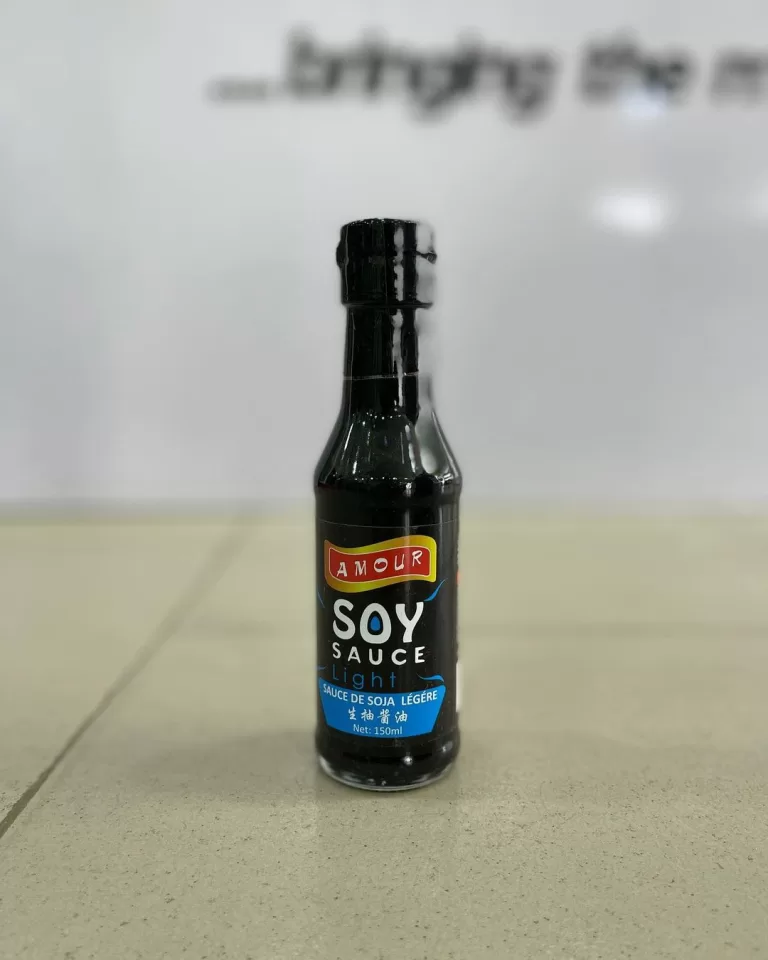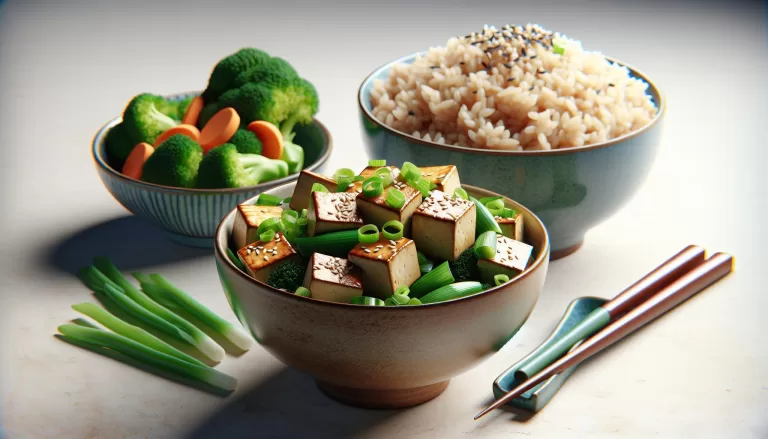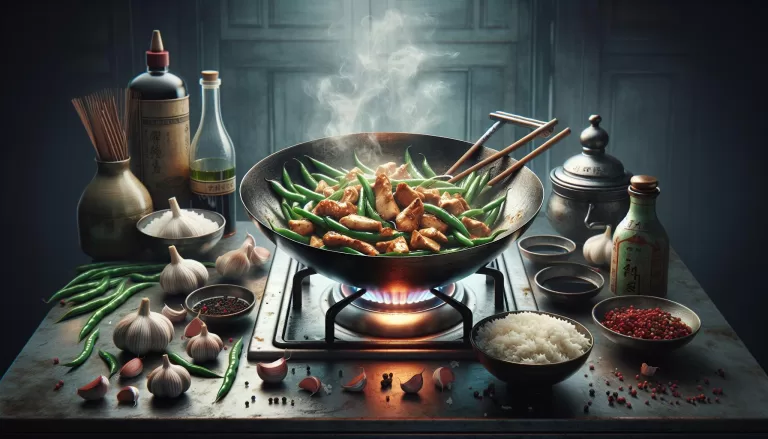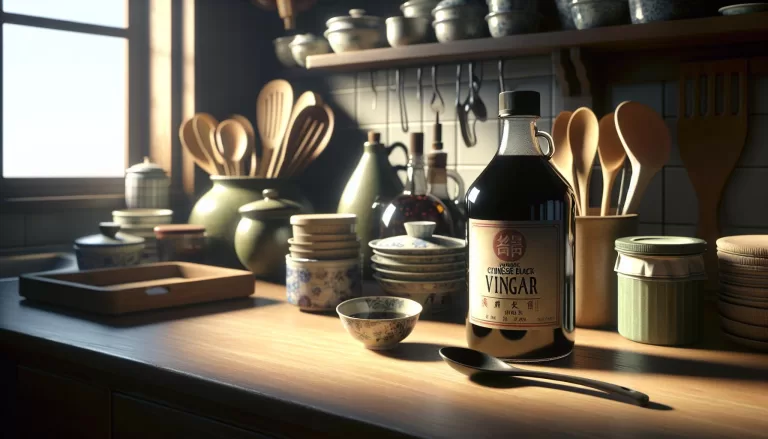Easy and Nutritious Homemade Chinese Sticky Rice Recipe with Detailed Steaming Instructions
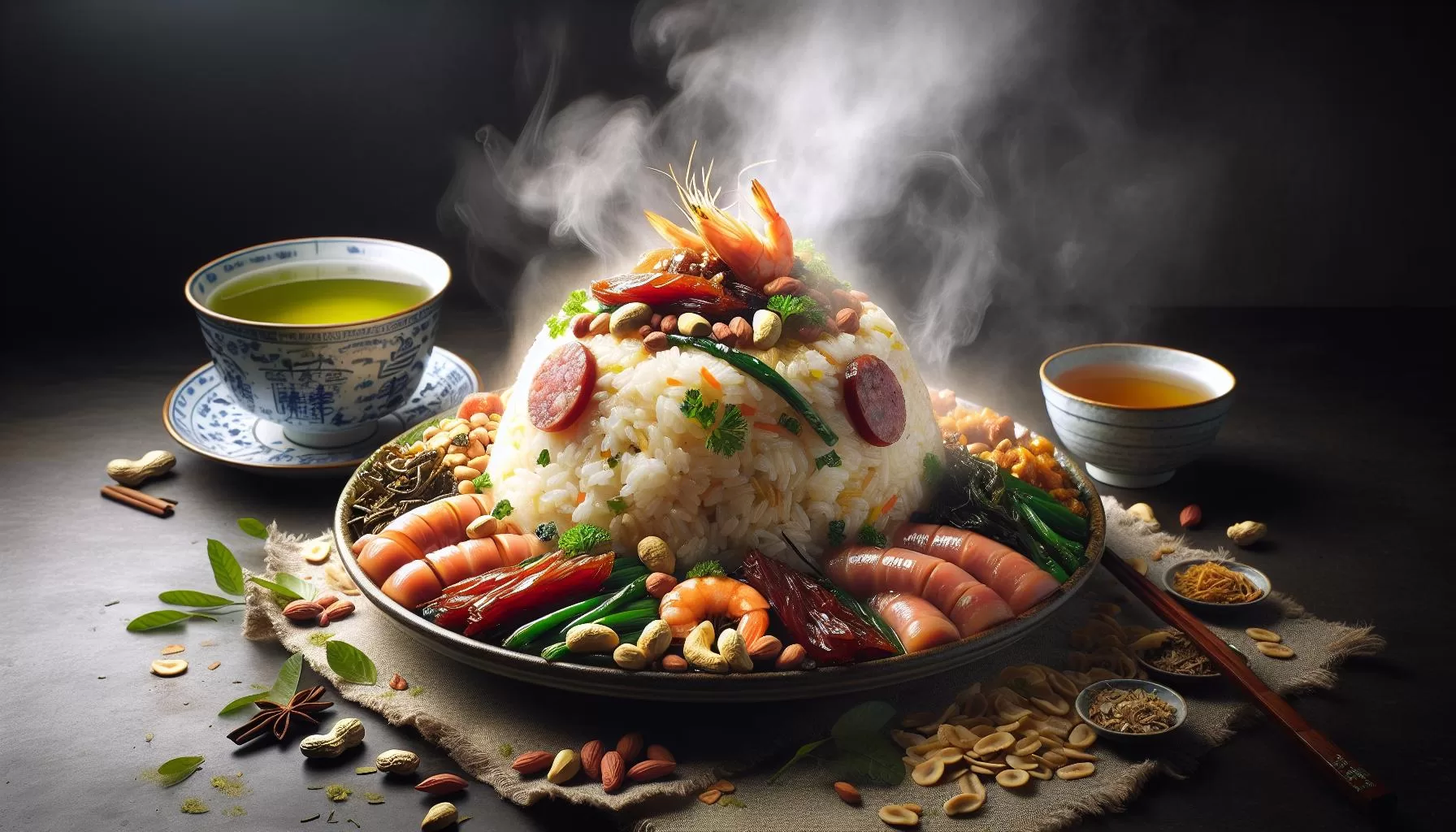
Selecting the Ingredients
Choosing the right ingredients is not just crucial, it’s actually half the game. When it comes to preparing homemade Chinese sticky rice, picking high-quality, authentic elements can make all the difference.
The cornerstone of this dish is, of course, the glutinous rice or sticky rice. You’ll need about two cups of it. Look for long-grain varieties, as they’ll deliver that distinctive chewy texture. Steer clear from the so-called “sushi rice,” – it’s a different type of short-grain sticky rice, and it won’t yield the same results.
While selecting soy sauce, opt for the light soy sauce. It offers a saltier, more robust flavor than its dark counterpart. You’ll need about three tablespoons of light soy sauce for this recipe. If you’re watching your sodium intake, there are low-sodium versions available that don’t compromise on taste.
The dish requires Chinese sausage, shiitake mushrooms, and dried shrimp. These give your dish an authentic touch and a mix of chewy, juicy, and crunchy textures. Add all this to your shopping list: half a cup of each.
Remember, dried shrimp and shiitake mushrooms typically need soaking before use, so plan accordingly. For a vegetarian version of the dish, you can skip the shrimp and sausage and instead double up on the mushrooms.
Thinking of turning this dish into a nutritional powerhouse? Well, here’s something to consider. Boost the benefits by incorporating leafy greens like kale or bok choy. They’re full of vitamins and fiber which will surely level up this dish’s health scale.
And do you want to add that extra kick to your sticky rice? Here’s a secret ingredient that might surprise you – Tea Leaves. Adding a teaspoon of grounded Oolong or jasmine tea to the water where you soak your rice can lend a subtle hint of aromatic notes, taking your dish truly to another level.
Preparing the Glutinous Rice

Diving right into the heart of your homemade Chinese sticky rice recipe: the preparation of our main ingredient, the glutinous rice. But don’t worry – it’s not as sticky as getting into a gooey situation.
Starting with two cups of long-grain glutinous rice, you’ll want to wash it under cold running water. This step removes excess starch and any impurities. It’s important to rinse until the water runs almost clear. You’re not just washing the rice; you’re priming it for a sublime sticky rice experience.
Next, you’ll need to soak the rice. Of course, you could simply soak it in plain water but remember the intriguing idea of infusing aromatic notes into your dish with tea? Now’s the time to try it. Soak the rice in water with two spoons of tea leaves for six hours, or even better, let it sit overnight. Don’t doubt your instinct to infuse that unique touch!
By now, your rice will have absorbed plenty of water. It’s time to drain any excess. Shake the soaked rice gently in a colander, removing all remaining moisture, leaving no room for sogginess in your dish.
| Leading Nutrient | Per 100 gram |
|---|---|
| Calories | 200 |
| Carbohydrates | 45 g |
| Protein | 3.4 g |
| Fat | 0.5 g |
While the nutritional value of glutinous rice isn’t its main draw, this small table gives you an idea of what’s in your serving. Calorie conscious? It’s around 200 calories per 100 grams. Carb conscious? It’s part and parcel of rice to come with carbohydrates – 45 grams to be exact.
And remember – with the right prep, the humble glutinous rice transforms from a simple grain to the star ingredient that gives your homemade Chinese sticky rice its signature chewy texture. Let’s continue to the next steps and bring that dish to life.
Soaking the Rice Properly

After you’ve gathered your tools and ingredients, it’s time to get down to the nitty gritty. Begin with 1 cup of uncooked glutinous rice, placed in a bowl. This quantity serves about 2 people and underscores the recipe’s flexibility. You can adjust it for more or fewer servings by following the same methodology.
Next, thoroughly rinse the rice. You’re not washing dishes here, but ensure you’re diligent. Rinse it under cold, running water until it runs clear. Why? It helps remove starch. Too much starch can turn your rice mushy, not sticky! After rinsing, it’s time for the pivotal moment – soaking the rice!
Here’s the kicker: soak the rice in cold water for 6 to 24 hours. That’s right, ideally overnight! Donut fret if you forget to start the night before, you do have some leeway. A minimum of 6-hour soak still assures the perfect texture. It gives grains the optimal moisture content, lending your dish the ideal stickiness.
As a uniquely interesting twist, consider infusing tea leaves during the soaking phase. Green tea, oolong, or jasmine all work well. They’ll lend your dish a dimension of aroma and depth. How much is enough? Around 1 to 2 teaspoons per cup of rice will do the trick.
Be sure to keep track of soaking time. Your patience rewards you with perfectly plumped-up grains, ready to continue their transformation. Duration influences potential health benefits too! According to a study in the Journal of the Korean Society of Food Science and Nutrition:
| Soaking Time | Reduced Phytic Acid |
|---|---|
| 7 hours | 8.5% |
| 20 hours | 37.9% |
Phytic acid interferes with mineral absorption, so reducing it can help your body get more nutritional value from your meal!
Adding the Traditional Flavors

Moving onto the next stage of creating your perfect homemade Chinese sticky rice, it’s time to add those unforgettable traditional flavors. The spotlight is on the unique concoction of condiments and seasonings that contribute to this dish’s distinct taste. Remember, authenticity is key to capturing the magic of this classic Asian staple!
When preparing your sticky rice, reach for some sweet Chinese sausage, peanuts, dried shrimp, and finely-chopped mushrooms. These values are as per 2 cups of uncooked glutinous rice:
| Ingredient | Quantity |
|---|---|
| Sweet sausage | ½ cup |
| Peanuts | ¼ cup |
| Dried Shrimp | 2 tbsp |
| Mushrooms | 2-3 pcs |
Saute these ingredients in sesame oil until the flavors meld and the aroma tantalizes your senses.
Are you a lover of intense, layered flavors? Why not introduce a dash of Chinese five-spice powder? It’s an exciting, not-so-common element that harmonizes beautifully with the other ingredients offering your sticky rice a unique twist.
Wondering about the nutritional punch this cooling weather comfort food packs? A combination of high dietary fiber, protein, and beneficial fats all steer this dish into the healthy territory. Here’s what you’re getting per serving:
| Nutrient | Amount |
|---|---|
| Calories | 280 |
| Protein | 6g |
| Fat | 8g |
| Carbs | 46g |
| Dietary fiber | 3g |
Meanwhile, the mushrooms add a bonus burst of vitamins. Rest assured, you’re satisfying more than just your taste buds!
Now that you’re equipped with the secret to adding depth and complexity to your homemade Chinese sticky rice, go on, and let that savory-sweet symphony bewitch your palate. And remember, it’s all about the process, so take your time, enjoy the experience and lose yourself in the magic of traditional home cooking.
Steaming and Serving

Once you’ve combined the savory-sweet mix of Chinese sausage, peanuts, dried shrimp, mushrooms, and a hint of Chinese five-spice powder, you’re ready to move onto the next step: steaming and serving your homemade Chinese Sticky Rice.
Steaming is essential in getting that perfect sticky yet tender texture. Start by lining a bamboo steamer with damp cheesecloth or cabbage leaves. Place your rice mixture into the lined steamer, forming an even layer. Then, let the magic of steam work. Expect to steam the rice for a good 45 to 60 minutes. Please use heat-resistant mitts – don’t scorch your fingers!
| Steaming Time | Temperature |
|---|---|
| 45-60 minutes | Medium-high |
Steaming not just ensures the flavorful melding of ingredients but also guarantees a nutrition-packed treat. Steamed rice retains a high percentage of nutrients compared to other cooking methods. The peanuts not only lend a unique crunch but also come with a healthy dose of protein.
We get it, the wait can be tough. But remember, a good dose of patience results in a beautifully crafted dish.
When the rice has that irresistible savory aroma, it’s time for the final act – Serving. Scoop generous helpings onto plates, pair with a hot cup of green tea, and you’re serving up more than just a meal. You’re making memories.
Different regions have different spins on presentation. Some serve the sticky rice in lotus leaves for that authentic touch. Exploring these variations, you, the chef of the household, can add extra layers to their dining experience.
This isn’t just another recipe. It’s a gateway to an enriched, global cooking experience ripe for your cooking arsenal. Deciding when and how to serve your sticky rice? That’s up to you. Transform your kitchen. Take your diners – whether it’s just you or a whole party – on a culinary journey.
Steaming and serving. Two simple steps that seal the success of your homemade Chinese sticky rice. In your kitchen, over your stove, you’re the master of this versatile dish. Your ingredients, your techniques, they define your unique rendition of this Asian delicacy.
Conclusion
So you’ve journeyed through the art of making homemade Chinese Sticky Rice. You’ve learned the magic of mixing flavors with Chinese sausage, peanuts, dried shrimp, mushrooms, and Chinese five-spice powder. You’ve discovered the importance of steaming to achieve that perfect texture and keep all the nutrients locked in. You’ve even picked up some serving tips – pairing your dish with green tea and presenting it creatively, perhaps wrapped in a lotus leaf. Remember, it’s your patience and personal touch that will transform this recipe into a memorable meal. So go ahead, take what you’ve learned and let your creativity shine. Your homemade Chinese Sticky Rice is sure to impress. After all, nothing beats the satisfaction of a well-crafted, nutritious dish made right in your own kitchen.

